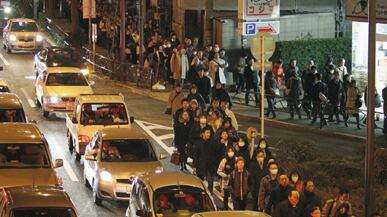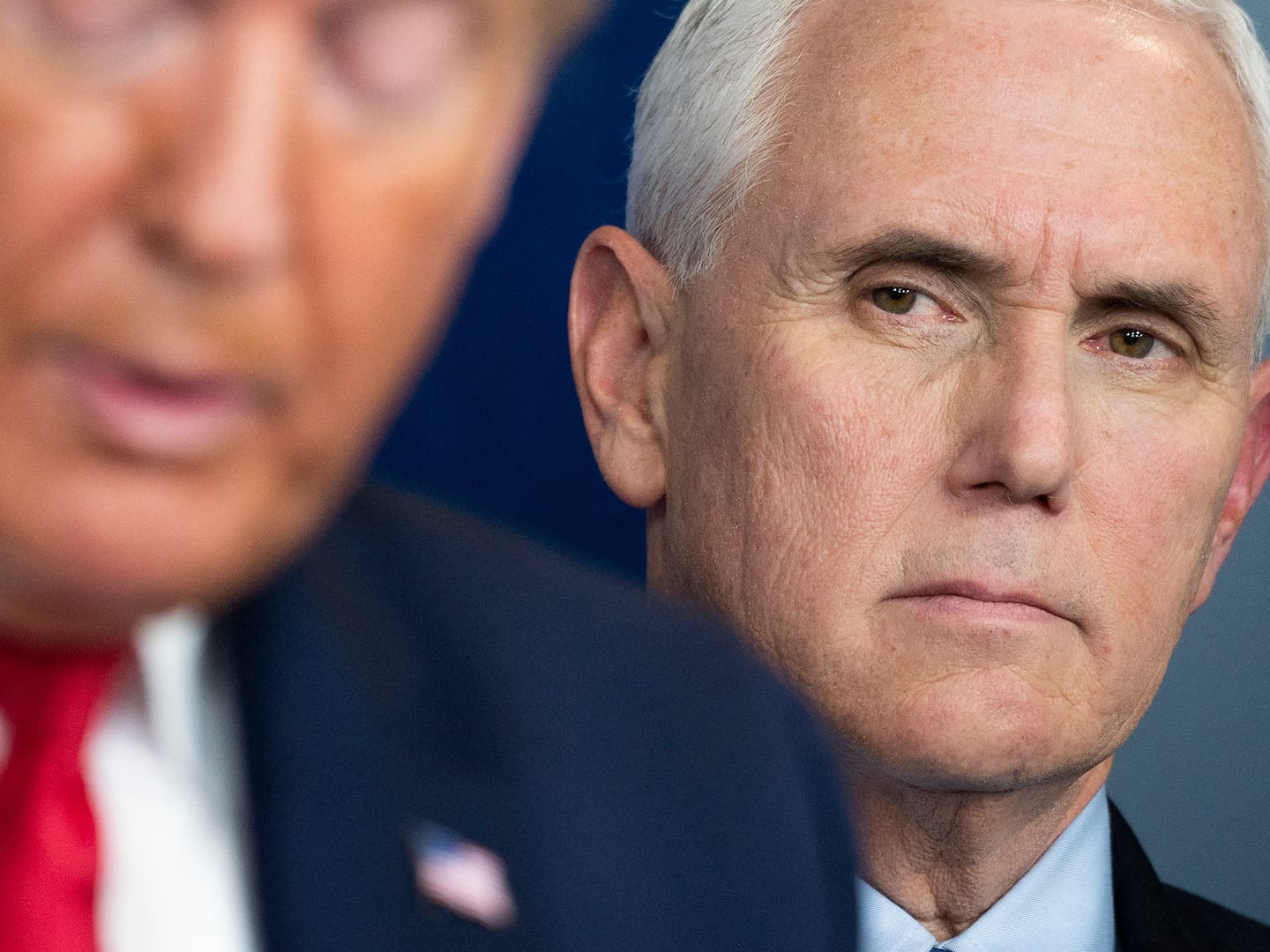Lennox Samuels reports on the first dark night after Japan's devastating earthquake and tsunami. Plus, see full coverage here.
In the wee hours of Saturday shell-shocked residents of Japan’s largest cities—Tokyo, Yokohama, Osaka—milled about, still absorbing the ravages of the earthquake and resultant tsunami that battered their country on Friday. The death toll rose beyond 350, with at least 500 more reported missing. And as night enveloped the country, fires burned in hard-hit Miyagi Prefecture, where 30-foot waves had swept buildings, automobiles, and boats through coastal areas in a fast-moving waterborne landfill. Fallout from the twin disaster rippled around the Pacific Basin, stretching as far as California, where low-level flooding was reported in the picturesque holiday town of Santa Cruz. The Associated Press reported that one person was killed and three others were missing in California, near the Oregon border.
Shocking Photos: Quake, Tsunami Aftermath in Japan

Up to 300 bodies were discovered in Sendai, the northeastern city closest to the epicenter of the 8.9-magnitude quake, which occurred at 2:46 p.m. Friday about 80 miles off the coast, and a broad stretch of Japan’s Pacific coast was destroyed. The death toll was widely expected to top 1,000. Authorities reported at least 50 aftershocks, a number of them above a 6.0 magnitude. One aftershock was significant enough—6.6 magnitude—that some seismologists were describing it as a secondary, full-blown quake. Little information was available on the tremor, but no additional damage was reported with it.
Residents living near a nuclear power plant in Fukushima, north of Tokyo, were ordered to evacuate the area, or stay indoors, amid reports that the facility’s cooling system had been knocked out—raising fears of radiation leakage. Prime Minister Naoto Kan declared a nuclear emergency. Nuclear-safety officials said pressure in one of six boiling water reactors at the plant had risen to 1.5 times above the normal level. They said radioactive vapor that will be released will not affect human health or the environment.
In Tokyo, some 4 million people were without power and hundreds of thousands of residents were stranded for hours, as train service remained suspended. Thousands opted to spend the night at their workplaces, while others set off for home on foot.
“I’ve never seen such widespread calamity,” Newsweek Japan editor Takashi Yokota said, a testament to the enormity of the disaster even in a nation accustomed to coping with earthquakes and tsunamis. “I’m still trying to grasp the extent of this disaster, but it is definitely more widespread than the 1995 Kobe earthquake—the images I’m seeing on television are simply unbelievable,” added Yokota, who was among the Tokyo residents who walked home from their offices.
“Public transportation is in disarray; one of the world’s most sophisticated train systems has stopped—the bus system and cabs are jammed with so many people trying to find a way back home,” he said. “With so many desperate to find a mode of transportation, queues are forming even in front of rental-car shops.”
The tsunami also reached Hawaii, but with little impact. President Obama offered condolences and assistance to the Japanese people, and an American aircraft carrier sped toward the scene, carrying supplies and provisions. The president said FEMA was “fully activated” and coordinating with local and state authorities in at-risk U.S. areas. “If people are told to evacuate, do as you’re told,” he said. Addressing the Japanese disaster, United Nations Secretary-General Ban Ki-moon said the world body “will do anything and everything we can at this very difficult time.”
Countries from Taiwan to the Philippines to Peru, Chile, and even Canada warned residents about possible tsunamis. But it was tiny Pacific nations such as Tuvalo that were in greatest danger. Amounting to little more than subterranean hiccups a few feet above sea level, such mini-states have long faced the threat of decimation through the ravages of climate change, but suddenly faced an immediate threat of inundation. As night fell, it was hard to say whether the relentless tidal waves would spare them.
Back in Japan, authorities cautioned that the question of whether buildings were safe had to be determined on a case-by-case basis. “Please do not try to judge by yourself what is safe and what is not,” said Cabinet Chief Secretary Yukio Edano. As uncertainty hung dankly over the nation, it was not clear that even daylight would bring clarity.
Lennox Samuels is a Newsweek/Daily Beast editor based in Bangkok. He covered the 2004 Indian Ocean tsunami.






